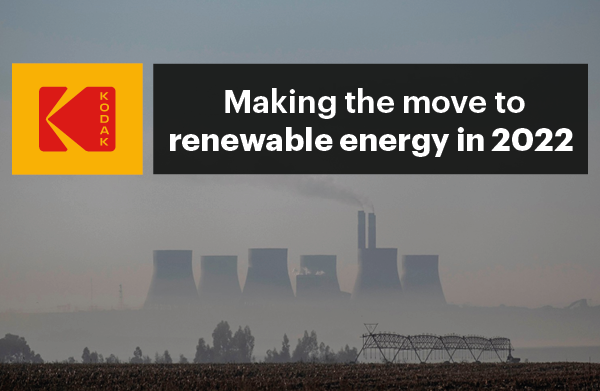Across the board, 2021 was dubbed as the apex of South Africa’s energy crisis, with load shedding reaching 1,000 hours in November and power prices increasing substantially over the year.
In terms of energy availability in South Africa, the chief executive of Business Leadership South Africa, Busi Mavuso, claimed that 2021 had been the worst on record.
However, the past 12 months also saw pivotal decisions being made to safeguard the country’s economic and energy future with the lifting of the electricity generation licensing exemption and, of course, the revolutionary funding declaration of COP26.
As such, 2022 is already looking like it will be a more positive year for the world of energy in South Africa.
A momentous decision
The COP26 conference held in Glasgow in October of 2021 resulted in a series of momentous decisions about tackling the world’s climate crisis. Nations came together with the shared aim of setting actionable goals to evoke real change in how countries produce and consume energy.
In South Africa, coal still accounts for roughly 90% of the country’s power. According to the Global Carbon Atlas, the country is the 12th largest CO2 polluter globally, emitting 452 metric tonnes of the harmful gas each year. Coal mines are contributing to catastrophic air pollution that is the cause of various respiratory illnesses coursing through local communities.
Not only this, but South Africa is already feeling the direct impact of climate change with an increase in extreme temperature days and severe droughts. Based on research from Reuters, more than 5,000 South Africans die each year in the ‘coal belt’ due to a lack of enforcement of air quality standards.
The country’s environmental situation was recognised at COP26 — as was its economic one. Without adequate funding, it will be impossible to rethink South Africa’s energy infrastructure to move away from fossil fuels.
In response, various global superpowers, including the United Kingdom, France, Germany and the United States, pledged to donate $8.5 billion to help end South Africa’s reliance on coal. This decision has been heralded as a revolutionary political declaration, and the funding aims to enable wind and solar to make up 25% of South Africa’s energy production by 2030.
However, the decision has been met with some speculation and concern.
A solution or a distraction?
The decision of the funds pledged to South Africa at COP26 has not been received with open arms across the board.
Some have suggested that the funding may pave the way for more corruption within the country. It has also been likened to an impossible task for South Africa’s energy infrastructure — not to mention drying out the job landscape for millions of coal-plant workers whose livelihoods depend on the coal plants being operational, referred to by South Africa’s Energy Minister, Gwede Mantashe, as ‘economic suicide’. Even if power utility Eskom decides to keep its coal plants open, it has stated it would need more than $20 billion to refurbish the plants to comply with emissions standards, or $35 billion over the next 15 years to make a successful transition to renewable power.
Yet, the jobs created by solar power versus coal are incomparable: coal stations provide job opportunities throughout the facility’s life, while solar PV technologies require fewer workers once the facility is operational. But ultimately, a more dependable energy supply is bound to benefit South Africa’s economy.
Nevertheless, President Cyril Ramaphosa has said the funding is ‘proof’ South Africa can take ‘ambitious climate action’ while increasing ‘energy security, creating jobs and harnessing new opportunities for investment’.
Solar: energy you can count on
As a starting point, the South African government has awarded $2.8 billion worth of renewable energy projects for reducing the country’s heavy dependence on coal and increasing South Africa’s generation capacity to 2,583 MW.
And with Eskom still so underfunded, thousands of households and companies are turning to solar energy as a more reliable power source.
There are myriad advantages of using solar power in South Africa for homes and businesses alike.
You can choose from a selection of different sized KODAK Inverters to create a hybrid or completely off-grid solar system that produces clean, renewable energy. With KODAK Solar Products, you can also benefit from a PV system utilising a battery, meaning you can store any surplus energy generated throughout the day for later use after sun hours.
It is time to transition to renewable energy and reduce reliance on the grid. Get started on your solar journey with KODAK Solar Products and find a skilled installer near you today.




